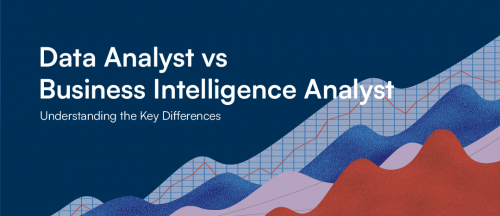

The RPA (Robotic Process Automation)
What is RPA?
By definition, RPA (Robotic Process Automation) is “a software technology that makes it easy to build, deploy, and manage softwares robots that imitate human actions interacting with digital systems and software.”
Even though this clearly depicts what RPA is, it is very often confused with another technology: AI (Artificial Intelligence). In order to clearly differentiate these two, let’s think of one as the human body, and the other as the human brain.
On one hand, RPA is represented as the human body. Indeed, as the body, it completes the tasks based on rules, and is all about doing things. It is also process centric, as it is focused on getting a process done, and its tools are made for repetitive, rules-based, and simple tasks.
On the other hand, AI is represented as the human brain. It takes care of the thinking process of making decisions based on available information. In addition to this, it is more data centric. It can train itself to recognize incoming data and take immediate action.
In the definition, it has been explained that RPA is using software robots to take care of multiple tasks. For example, RPA technology is able to extract structured data from documents, log into and run applications, open emails and attachments, fill in forms, read and write databases, make calculations, connect to other systems, etc.
However, so that a task can be taken up by RPA, it must respect several criteria: the processes need to be highly manual, repetitive, and rules-based.
This way, humans get to keep the high-level activities for themselves: the face-to-face interactions or coming up with complex strategies. They can be dedicated to the things that make them irreplaceable.
RPA over time
Over the years, RPA evolved and went through different stages.
As from 1960s, RPA took its first steps by combining different types of technologies with each other. At the beginning of the next century, in the early 2000s, the “RPA” term emerged and a first software (with limited capacities) was developed.
Within the last few years, RPA gained in fame. Indeed, it began well known as from 2015, and reached a booming point in the last 3 to 4 years thanks to its combination with AI technologies.
Nowadays, RPA is one of the most preferred technologies for many companies around the world, and is going to, if it continues on this growing trend, get even more known and used in the future.
RPA in practice
RPA is one of the major players in digital transformation. Companies that try it out as part of their digital transformation programs obtain value right away by automating simple tasks like processing and moving data between systems.
To reach the full potential of digital transformation, companies need to expand RPA with a combination of technologies enabling the fully automated enterprise, keeping RPA as center of gravity.
As a matter of fact, RPA can be combined with other technologies such as:
- AI and Machine Learning: combined with AI and ML models, RPA can process, for example, scanned invoices – which are unstructured, digitally converted documents.
- Advanced analytics: this combination can help to measure the automation performance against business KPIs, like time or money saved.
- Process Mining: process mining and tasks mining allow to scientifically discover automation user-cases within an organization by analyzing back-end and front-end data.
Furthermore, the RPA technology can be used within every department of every company, as long as its basic criteria are respected (the processes need to be highly manual, repetitive, and rules-base. Concrete tasks for which RPA can be used are, for example, payroll processing, client information updating, financial statement reconciliation, compliance reporting, and customer complaint processing.
Benefits & limitations
For companies, the benefits of using RPA are plentiful. Some examples of these are its availability (robots are working 7d/7, 24h/24), its major cost savings (RPA drives rapid, significant improvement to business metrics across industries and around the world), grow revenue (by reducing cycle time and capturing additional revenue streams), and greater resilience (RPA robots can ramp up quickly to match workload peaks and respond to big demand spikes).
However, it also has its limitations. Indeed, even though RPA is a cutting-edge and booming technology, there still are several that need to be taken care of and improved. For example, RPA requires structured data (and 80% of enterprise data is buried in unstructured documents, such as emails, letters of credit, invoices, passports, voice and callback processes, etc., and RPA bots cannot use this type of data yet), cannot read and interpret image or graphic data, nor handwritten documents.
What’s in it for your company
As companies are constantly striving for a digital transformation of their operating models but also reducing operational costs, RPA can certainly meet both needs.
Major sectors such as banking, retail, healthcare have already invested heavily in this new technology. Therefore, at Headmind Partners we started to take a closer look at the technology as we are convinced RPA will play a major role and offer competitive advantage to companies trusting this technology.
Some consultants have already started their RPA journey at Headmind Partners to assist and guide more efficiently companies toward their successful digital transformation.
Sources:
https://www.cio.com/article/227908/what-is-rpa-robotic-process-automation-explained.html/amp
https://www.ibm.com/cloud/learn/rpa
https://www.automationanywhere.com/rpa/robotic-process-automation
https://research.aimultiple.com/rpa-stats/
https://www.linkedin.com/pulse/12-interesting-numbers-you-should-know-rpa-robotic-strafacci-neto/
https://www.uipath.com/rpa/academy
https://www.uipath.com/rpa/robotic-process-automation
https://www.automationanywhere.com/rpa/robotic-process-automation
https://www.kofax.com/learn/blog/benefits-of-rpa
https://www.uipath.com/blog/rpa/the-evolution-of-rpa-past-present-and-future






